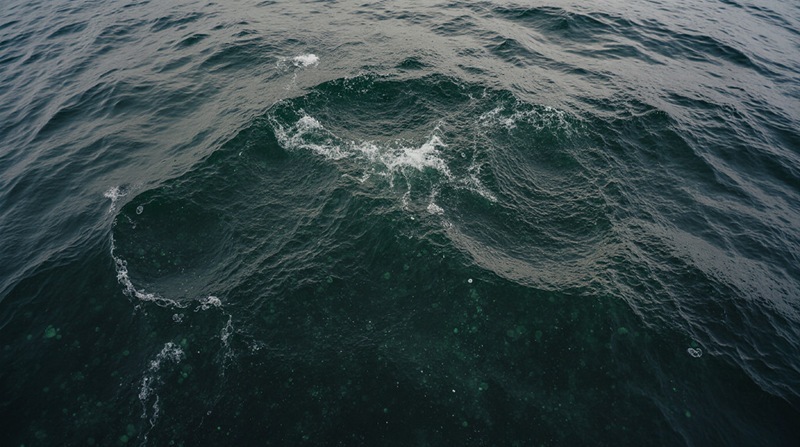
A groundbreaking scientific discovery off the coast of Russia’s remote Kamchatka Peninsula has unveiled a unique natural phenomenon at Penzhina Bay: its colossal tidal movements not only nourish majestic Greenland whales but also act as a powerful, previously unrecognised natural mechanism for absorbing atmospheric carbon dioxide. This significant finding, presented by the research coordination team at Vitus Bering Kamchatka State University, highlights the extraordinary environmental significance of one of the planet’s most dynamic marine environments. The Penzhina Bay, located in the Okhotsk Sea, boasts the Pacific Ocean’s highest tides, reaching an astonishing 13 meters. Scientists from the Pacific Oceanological Institute have determined that these extreme conditions forge a unique ecosystem, simultaneously serving as a vital feeding ground for marine giants weighing up to 100 tons and efficiently capturing vast amounts of CO2 from the air.
The extensive research, conducted aboard the scientific vessel “Academician Oparin” during the summer of 2025, spanned 35 days across an almost 800-kilometer stretch of water, from the Penzhina River mouth to the deep Okhotsk Sea. The multidisciplinary expedition involved 32 scientists – including marine geologists, biologists, physicists, and chemists – alongside a 30-member crew. Pavel Semkin, head of the hydrochemistry laboratory at the V.I. Il’ichev Pacific Oceanological Institute, noted that this was the fourth comprehensive expedition to the area since 2023, marking a crucial resurgence in studies after a prolonged hiatus; the last comparable research, conducted in 1984, primarily focused on the bay’s potential for tidal power generation.
The most pivotal revelation was the discovery that the entire water column of Penzhina Bay, extending down to 60 meters, remains consistently undersaturated with carbon dioxide compared to the atmosphere. While atmospheric CO2 levels typically measure around 418 microatmospheres, water samples in the bay registered significantly lower, between 230–300 microatmospheres. This substantial pressure differential drives a continuous influx of CO2 from the air directly into the marine environment. Once absorbed, this carbon dioxide is rapidly integrated into the biological cycle, primarily consumed by phytoplankton through intense photosynthesis.
The sustained intensity of photosynthesis is facilitated by a constant deep-sea influx of biogenic nutrients and extended daylight hours during the summer. This rapid CO2 uptake means the water never reaches equilibrium with the atmosphere, ensuring its continuous capacity to absorb more carbon. The journey of carbon doesn’t end there: it then travels up the food chain to zooplankton and, eventually, to the whales, while a significant portion of organic matter settles onto the seabed. This process effectively sequesters carbon, removing it from the active carbon cycle for extended periods. This intricate balance is maintained by the bay’s unique hydrology, where powerful tides generate robust vertical, not just horizontal, mixing, creating a uniform water mass with near-zero temperatures from surface to bottom, even in July—a distinct characteristic compared to the typical stratified structure of most shelf seas. These vital investigations are part of a broader interdepartmental program for studying the Kamchatka Peninsula and adjacent waters, spanning 2024–2026, and bringing together the expertise of ten scientific organizations under the coordination of Kamchatka State University.
This discovery underscores the critical role that unique, often extreme, marine environments play in global climate regulation and biodiversity. It highlights the importance of continued international scientific collaboration in understanding and preserving such vital natural carbon sinks, offering new insights into the planet’s complex climate systems and potentially informing future environmental strategies.